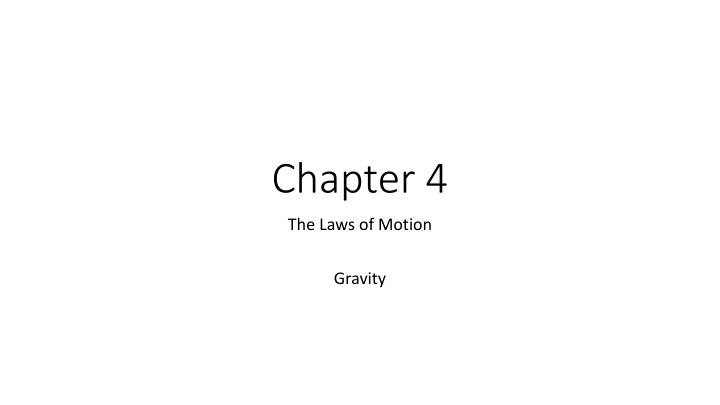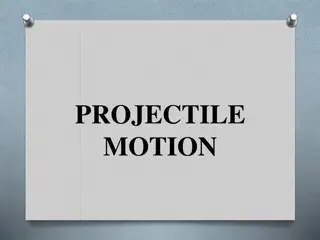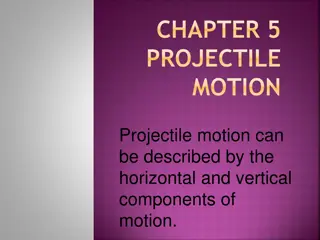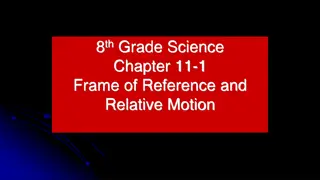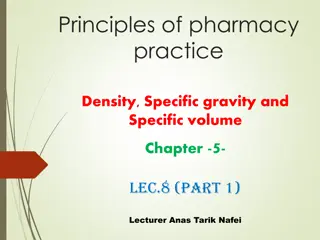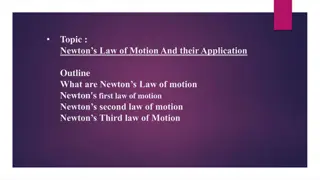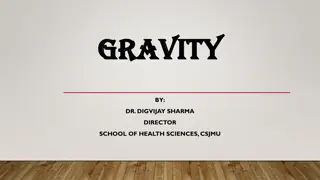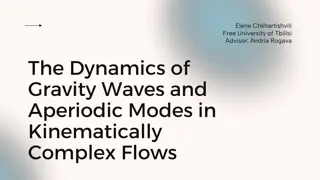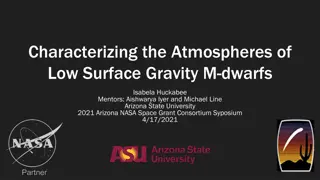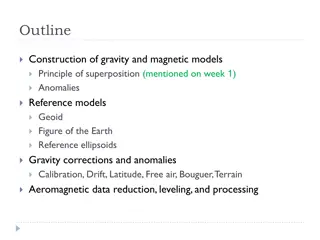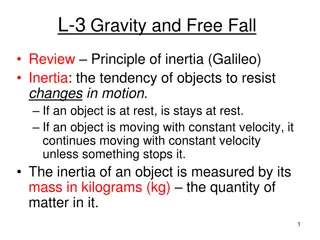Gravity: The Laws of Motion
Gravity is the attractive force between objects, influenced by mass and distance. Newton's Law of Universal Gravitation explains this force, affecting everything from falling objects to planetary orbits. Mass and acceleration play key roles in gravitational interactions, shaping our understanding of motion and weight.
Download Presentation

Please find below an Image/Link to download the presentation.
The content on the website is provided AS IS for your information and personal use only. It may not be sold, licensed, or shared on other websites without obtaining consent from the author.If you encounter any issues during the download, it is possible that the publisher has removed the file from their server.
You are allowed to download the files provided on this website for personal or commercial use, subject to the condition that they are used lawfully. All files are the property of their respective owners.
The content on the website is provided AS IS for your information and personal use only. It may not be sold, licensed, or shared on other websites without obtaining consent from the author.
E N D
Presentation Transcript
Chapter 4 The Laws of Motion Gravity
Gravity There s a lot about you that s attractive! At this very moment, you are exerting an attractive force on everything around you Your desk, your classmates, even planets millions of kilometers away! Anything that has mass is attracted by the force of gravity
Gravity Gravity is an attractive force between any two objects that depends on the mass of the objects and the distance between them This force increases as the mass of either object increases or as the objects move closer
Gravity Newton s Law of Universal Gravitation States that the force of attraction between two objects results from their masses and the distance between the two objects All objects are attracted to one another
Gravity Mass has a lot to do with gravity, but so does acceleration If you dropped a bowling ball and a marble at the same time, which would hit the ground first, assuming air resistance and all factors other than gravity are ignored? They would hit the ground at the same time because they have the same acceleration Close to Earth, the acceleration of an object in free fall is 9.8 m/s (REMEMBER THIS NUMBER!) and is symbolized by the letter g
Gravity To figure out the gravitational force GF = mass (kg) x 9.8 m/s2 Units = Newtons (N) This is actually the same formula you use to calculate weight Weight is the mass of an object with gravity taken into consideration Even if you are not falling from the sky, Earth s gravity still has a downward pull on you Mass is how much matter there is, weight is a force A skydiver with a mass of 70 kg accelerates to earth at a rate of 9.8 m/s . What is the force of gravity on the skydiver?
Gravity Gravity influences your ability to throw a ball in a straight line Typically the object you re throwing (aka a projectile) curves downward When you throw an object, the force exerted by your hand pushes the object forward, which gives the ball a horizontal motion When you let go of the object, gravity can accelerate it downward, giving it a vertical motion This combination of motions is unbalanced, causing the object to travel in a curve
Gravity Another type of motion we see that results from gravity is centripetal Centripetal means toward the center or center seeking Centripetal force is a net force that directs an object to follow a circular or curved path Gravity is pushing/pulling the object towards the center of the path Centripetal force keeps the riders on these swings moving in a circle
